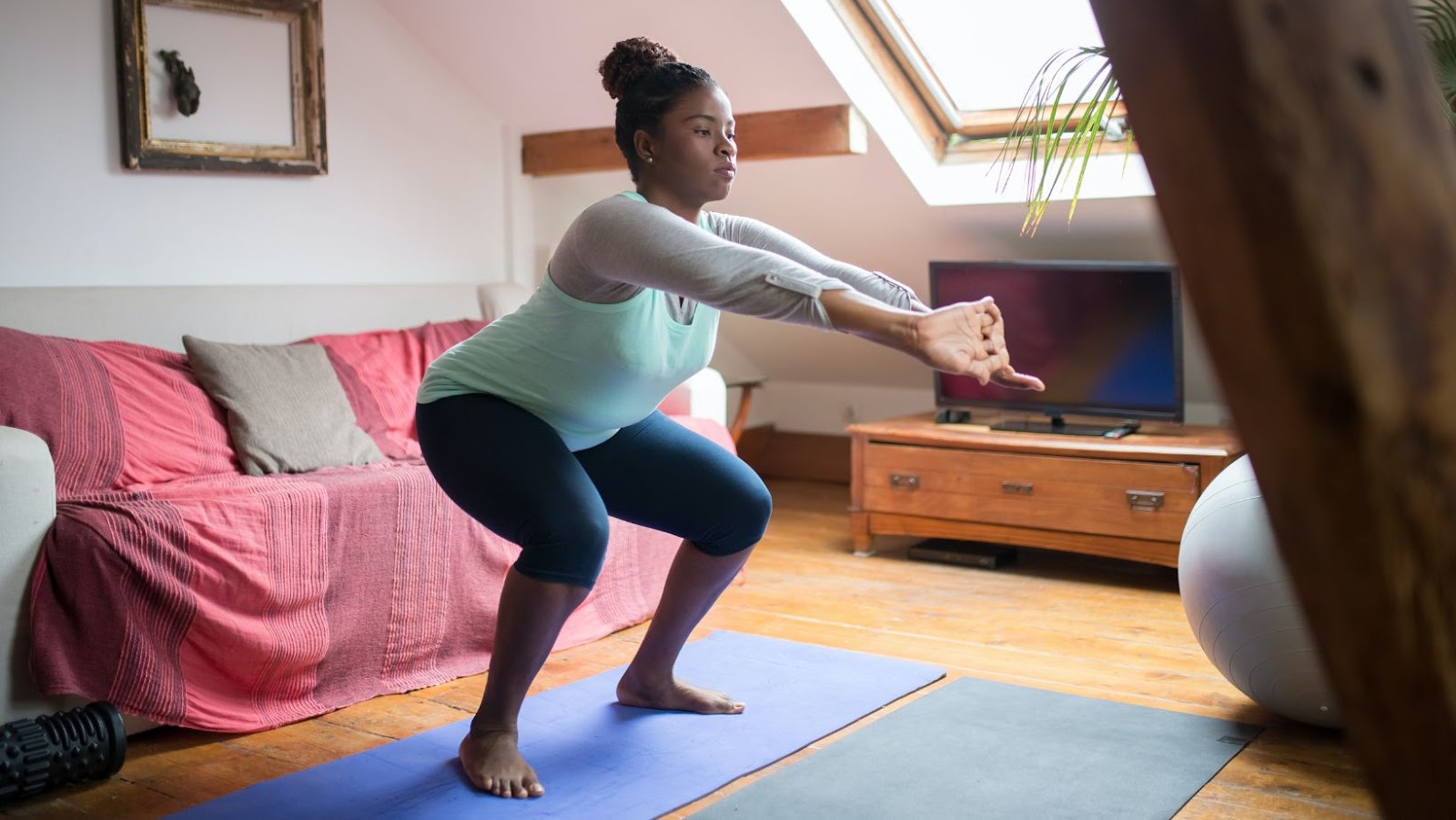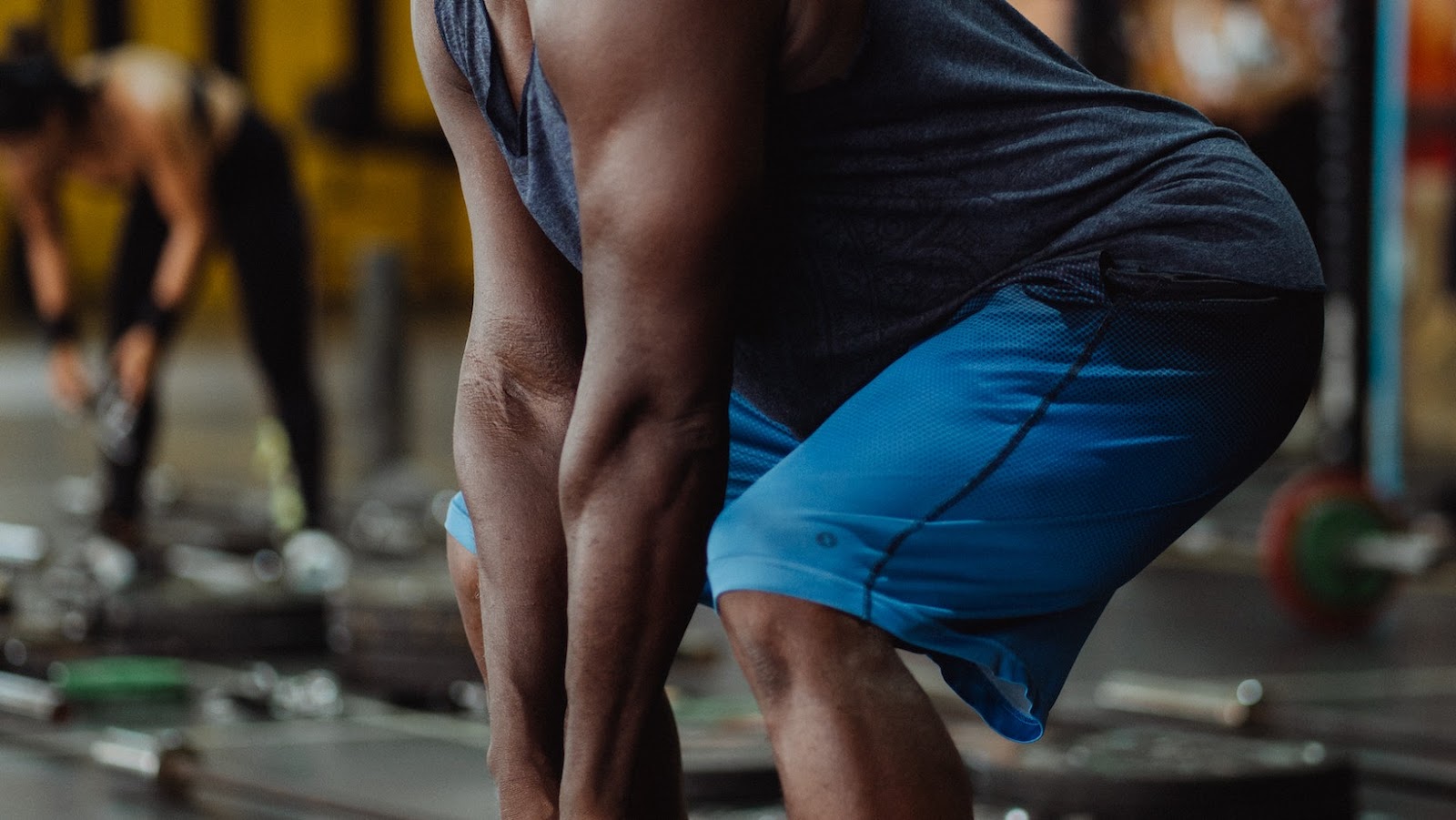Do you have pain in your lower back that won’t seem to go away? Front squats may be the answer you’re looking for!
Strengthening your legs with front squats can help alleviate lower back pains and improve mobility. Discover why this exercise is so beneficial and how to do it correctly.
Introduction to the Front Squat
The front squat is a strength training exercise that targets the lower body muscles, primarily the quadriceps, glutes, and core. Unlike the back squat, where the barbell rests across the shoulders and upper back, in the front squat, the barbell rests on the front of the shoulders. This position places a greater demand on the core muscles to maintain proper posture throughout the movement.
The front squat also places less stress on the lower back, making it a safer alternative for some individuals with back injuries or mobility issues. Additionally, the front squat can improve mobility in the ankles, hips, and shoulders, making it a great exercise for athletes and weightlifters.
Incorporating front squats into your workout routine can help add variety and target different muscles, helping to prevent plateaus and improve overall strength and fitness.
Benefits of the Front Squat
Front squats are a highly effective compound exercise that targets multiple muscle groups in the body, making them an essential addition to any strength training routine. They primarily target the legs, core, and upper back, but many other muscles also engage during the movement, resulting in several benefits.
Here are the key benefits of front squats:
|
1. Develop Leg Strength & Endurance: |
Front squats target the quads, hamstrings, glutes, and calves, resulting in more explosive jumps, faster sprints, and better overall leg endurance. |
|
2. Improve Core Stability and Balance: |
The placement of the barbell in front of the body during the front squat places a significant demand on the core muscles, improving overall stability and balance. |
|
3. Increase Upper Back Strength: |
Holding the barbell in place during the front squat requires a considerable amount of upper back strength, resulting in stronger and healthier shoulder blades, traps, and rhomboids. |
|
4. Enhance Mobility: |
Performing front squats on a regular basis can help improve your mobility and flexibility, allowing for better overall range of motion. |
Incorporating front squat into your workout routine can lead to better overall strength, endurance, balance, and flexibility.
What Does Front Squat Work
The front squat is an excellent compound exercise that targets multiple major muscle groups in the lower body, core, and upper back.
Here are the muscles worked during the front squat:
|
Quadriceps: |
The front squat primarily targets the quadriceps or the muscles at the front of your thighs, helping to build strength and size in this muscle group. |
|
Glutes: |
The glutes or the muscles in your hips and buttocks are also engaged during a front squat, especially when you push up from the bottom position. |
|
Hamstrings: |
The hamstrings, or the muscles at the back of your thighs, also play a supporting role in the front squat movement. |
|
Core: |
The front squat requires you to maintain an upright torso and engage your core muscles to stabilize your spine and pelvis. |
|
Upper back: |
The front squat relies on the upper back muscles to keep the barbell in place on your shoulders and maintain proper form throughout the exercise. |
By targeting multiple muscle groups, the front squat helps to improve your overall lower body strength, power, and athletic performance.
Pro tip: To get the most out of your front squats, focus on maintaining proper form, keeping your chest up, and pushing through your heels during the lift.
How to Perform the Front Squat
The front squat is a highly effective exercise that works your quadriceps, hamstrings, glutes, and core muscles. It can also help improve your balance and mobility.
To perform the front squat:
- Place the barbell in front of your shoulders, resting on your clavicle and front deltoids.
- With your feet shoulder-width apart, lower yourself into a squat position, keeping your core engaged and your weight on your heels.
- Stand up by pushing through your heels, keeping your back straight and your elbows high.

The front squat is a compound exercise, meaning it works multiple muscle groups at once. It primarily targets the quads, but also engages the hamstrings, glutes, and core muscles for stability.
Pro tip: Practice good form and start with a lighter weight before progressing to heavier weights to avoid injury.
Common Mistakes When Doing the Front Squat
The front squat is a great exercise for building lower body strength, particularly in the quads, glutes, and core muscles. However, there are several mistakes to avoid when performing this exercise to get the most out of it and prevent injury.
|
Mistakes to Avoid |
|
1. Improper grip placement on the barbell. |
|
2. Leaning too far forward during the squat, which places excessive strain on the lower back and knees. |
|
3. Failing to maintain proper form throughout the exercise. |
|
4. Lifting too much weight without proper warm-up or progression. |
Pro tip: Practice with lighter weight to perfect your form before increasing the load. Maintaining proper form throughout the exercise will maximize the benefits and prevent injury.
Variations of the Front Squat
Front squat is an effective exercise that works on the quadriceps, glutes, and core muscles. Here are three variations of the front squat that can help you target these muscles differently:
|
1. Clean Grip Front Squat: |
This variation involves holding the barbell with your fingertips just outside your shoulders. It puts more emphasis on your upper back and trapezius muscles. |
|
2. Crossed Arm Front Squat: |
In this variation, you hold the barbell with your arms crossed in front of your chest. It enables you to lift more weight as compared to clean grip front squat. |
|
3. Zercher Front Squat: |
In this variation, you hold the barbell in the crook of your elbows with your hands clasped together. It puts more emphasis on your biceps, forearms, and core muscles. |
It is essential to mix up the variations of front squats to keep your routine fresh and target your muscles in various ways.
Tips for Optimizing the Front Squat
Front squats are an effective exercise that targets the quads, glutes, and core while improving posture and overall body strength. Here are some tips for optimizing your front squat technique and getting the most out of this exercise:
|
Tip |
Description |
|
1. Proper Grip |
Use a clean grip and ensure that your fingers are aligned with the bar. Place your elbows in front of the bar and keep them pointing down throughout the exercise. |
|
2. Core Stability |
Tighten your core muscles and keep your back straight throughout the movement to prevent injury and maintain proper form. |
|
3. Foot Placement |
Position your feet shoulder-width apart or slightly wider with your toes pointing forward or slightly outward. |
|
4. Lowering and raising the barbell |
Lower the bar slowly and with control, driving your hips back and keeping your chest up. Raise the bar using the power from your legs and glutes while maintaining an upright posture. |
|
5. Breathing |
Take deep breaths before lowering yourself before the squat, hold your breath in your paused position and blow out when standing up. |

Proper execution of these tips, combined with consistent training, can help you maximize the benefits of front squats and take your fitness routine to the next level.
Wrapping Up the Front Squat
The front squat is a compound exercise that targets multiple muscle groups in the lower body, primarily the quads, glutes, and hamstrings. Additionally, it works the core, upper back, and shoulders, making it a full-body exercise.
When performing a front squat, the weight of the barbell is held in the front rack position, which puts more emphasis on the quads and abs, compared to a back squat that targets the glutes and hamstrings more prominently. The front squat is a versatile exercise that can be modified to suit different fitness levels and goals. It can be used for strength training, muscle building, and improving overall fitness.
To wrap up, front squats should be incorporated into your exercise routine, especially if you are looking to build lower body strength and improve your core stability. Make sure that you perform the exercise with the correct form and gradually increase the weight to avoid injuries.
